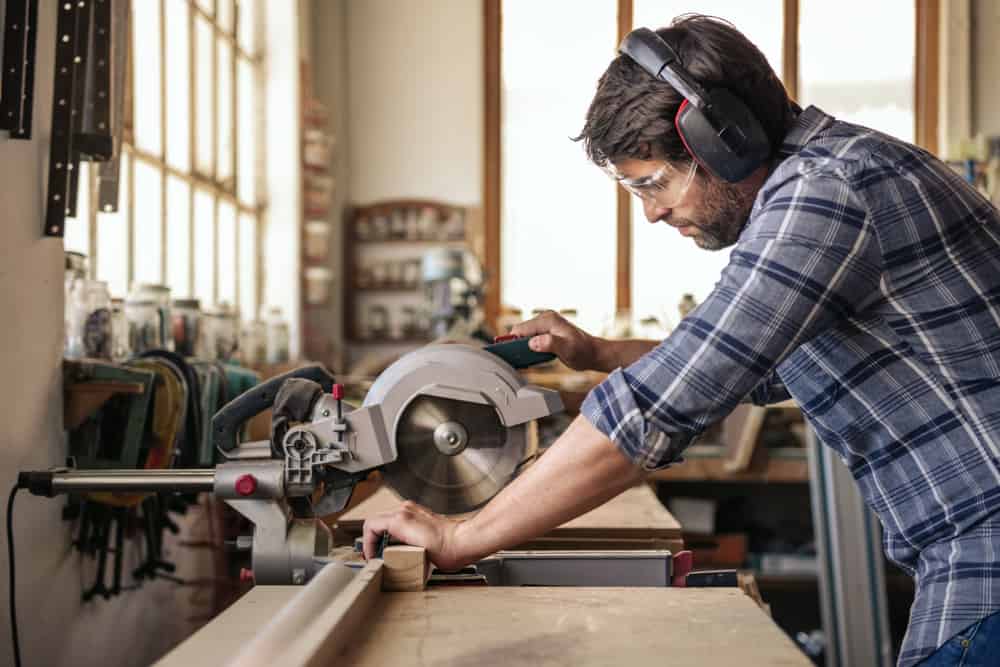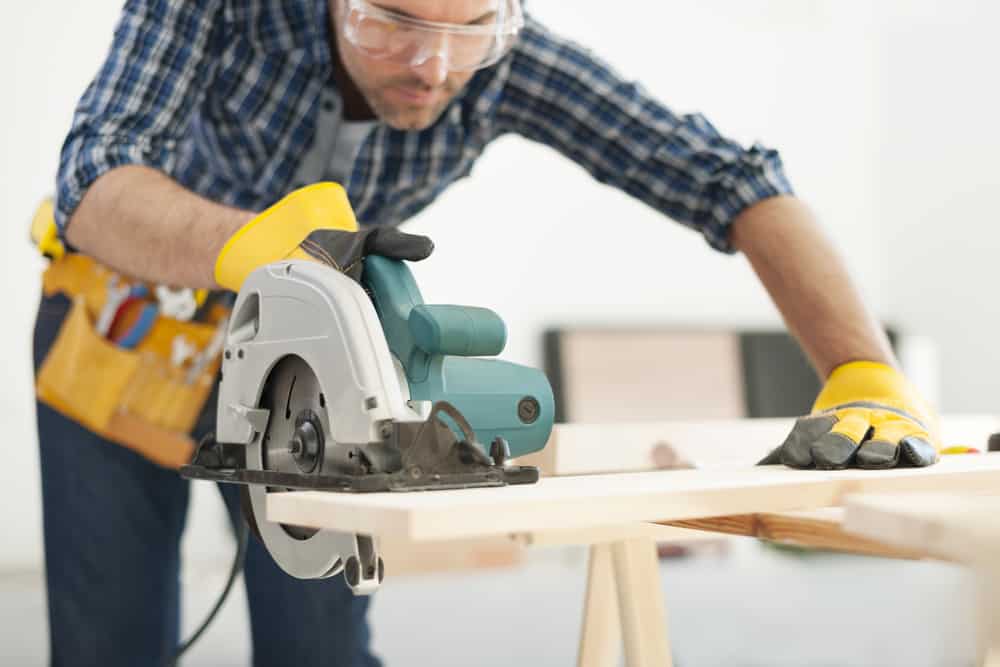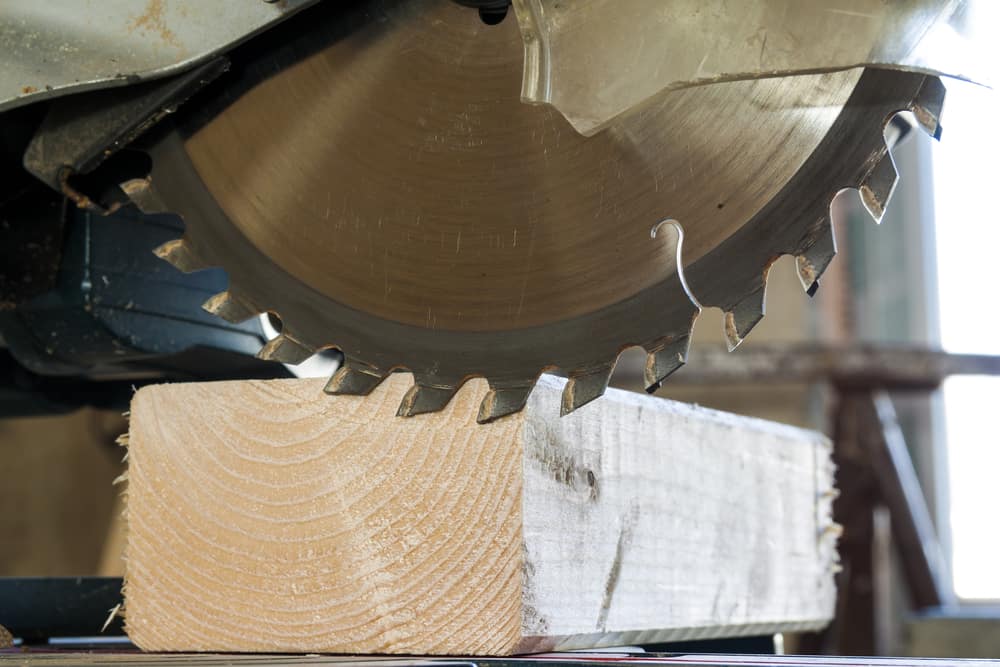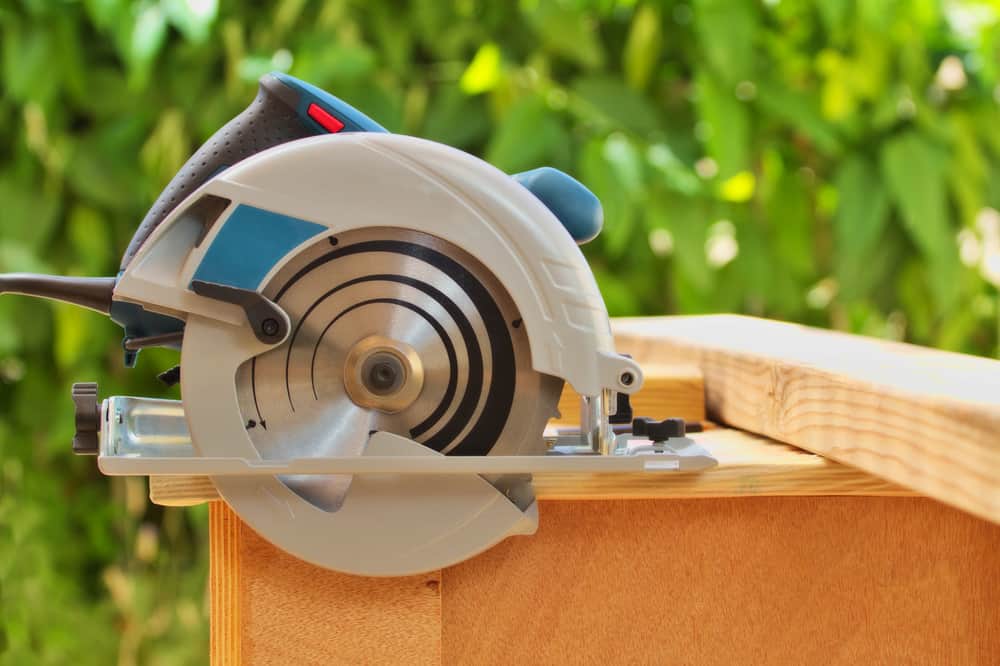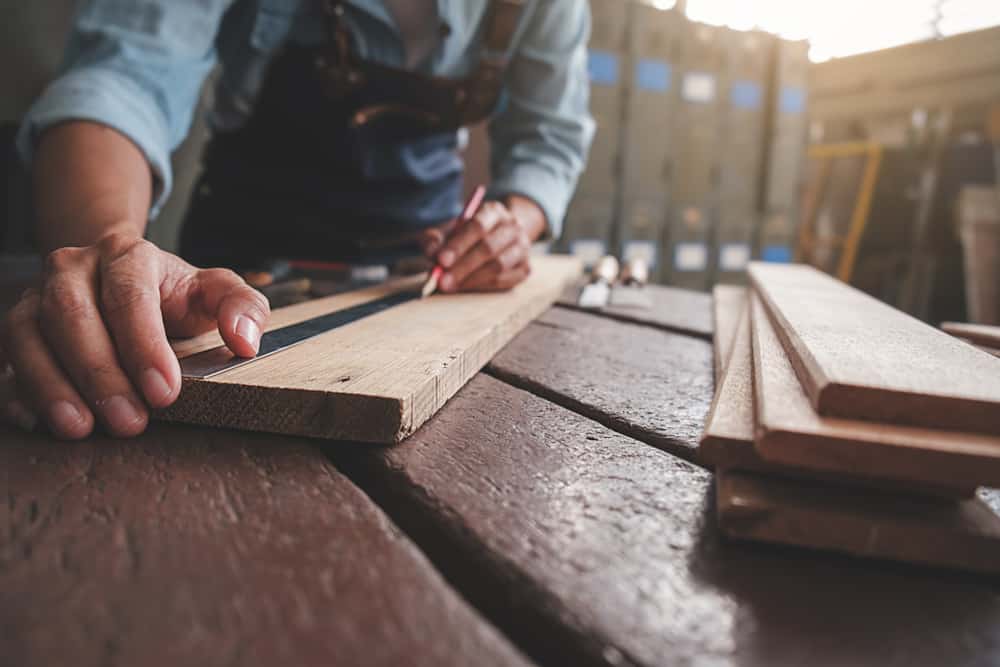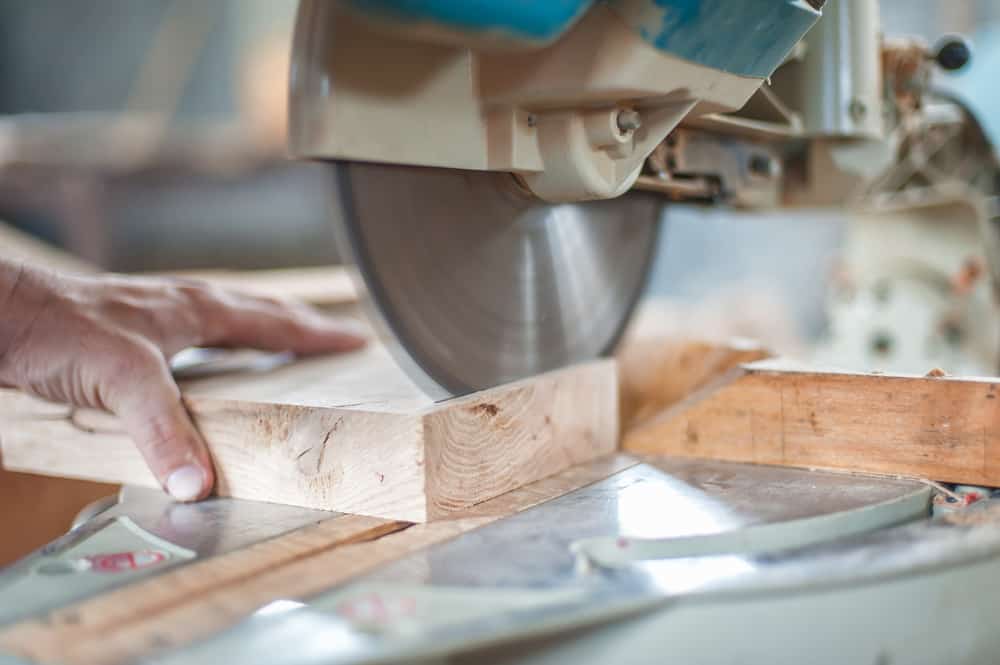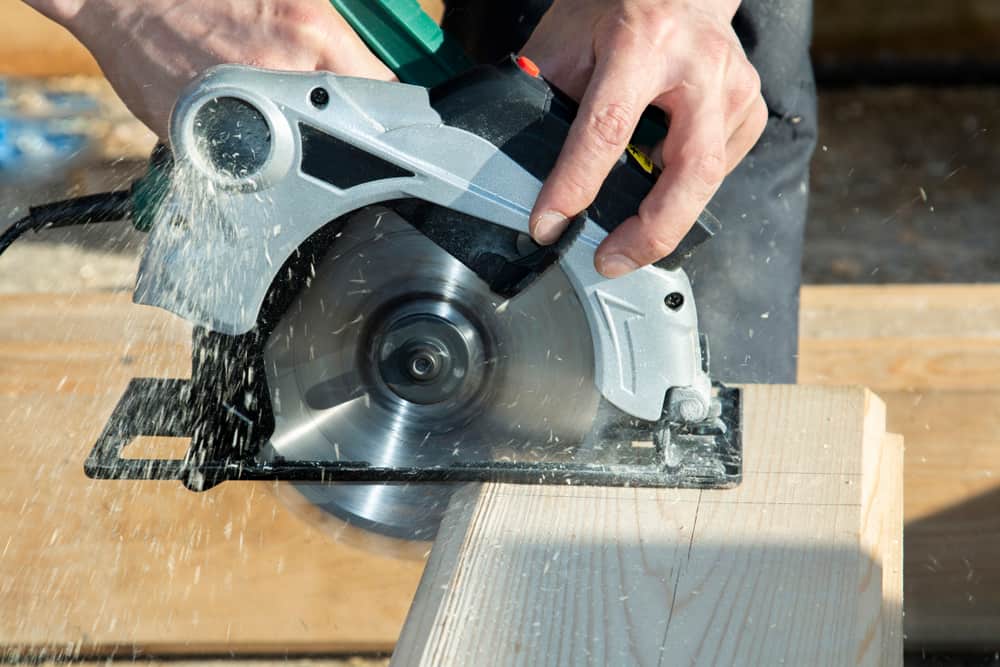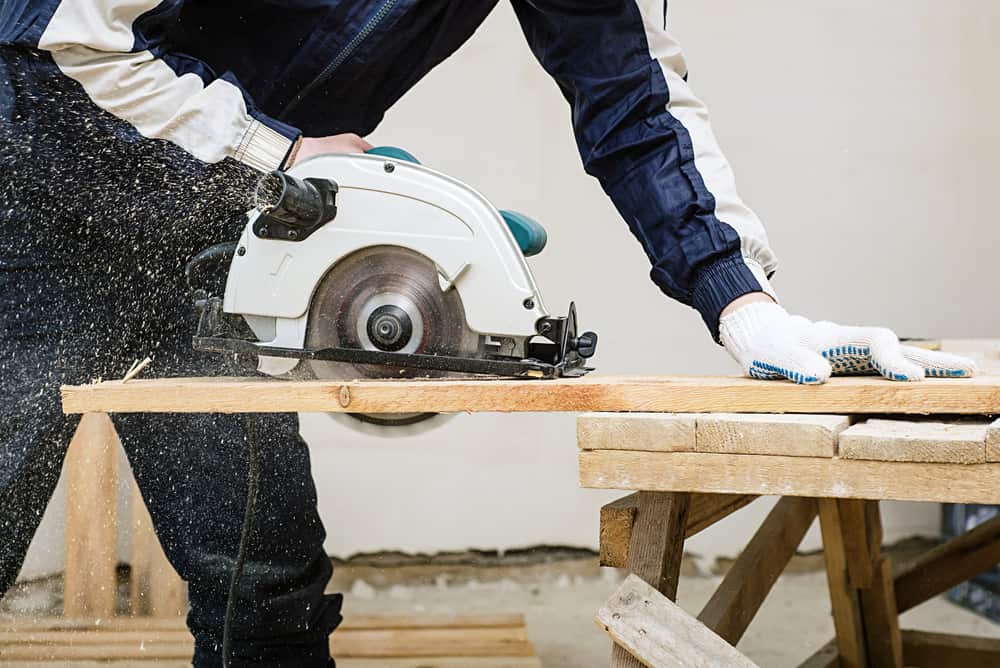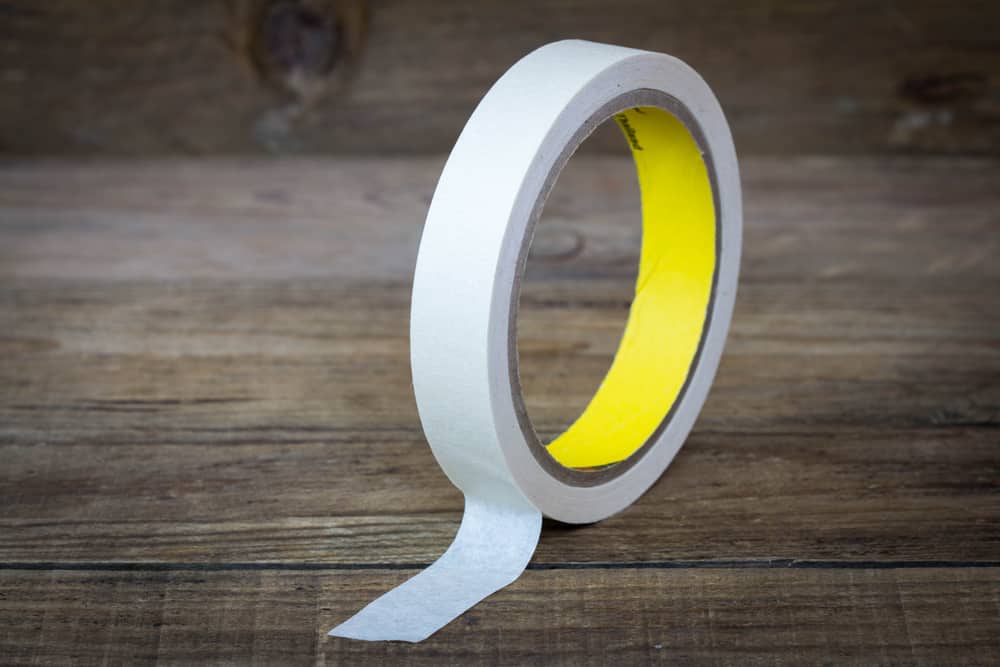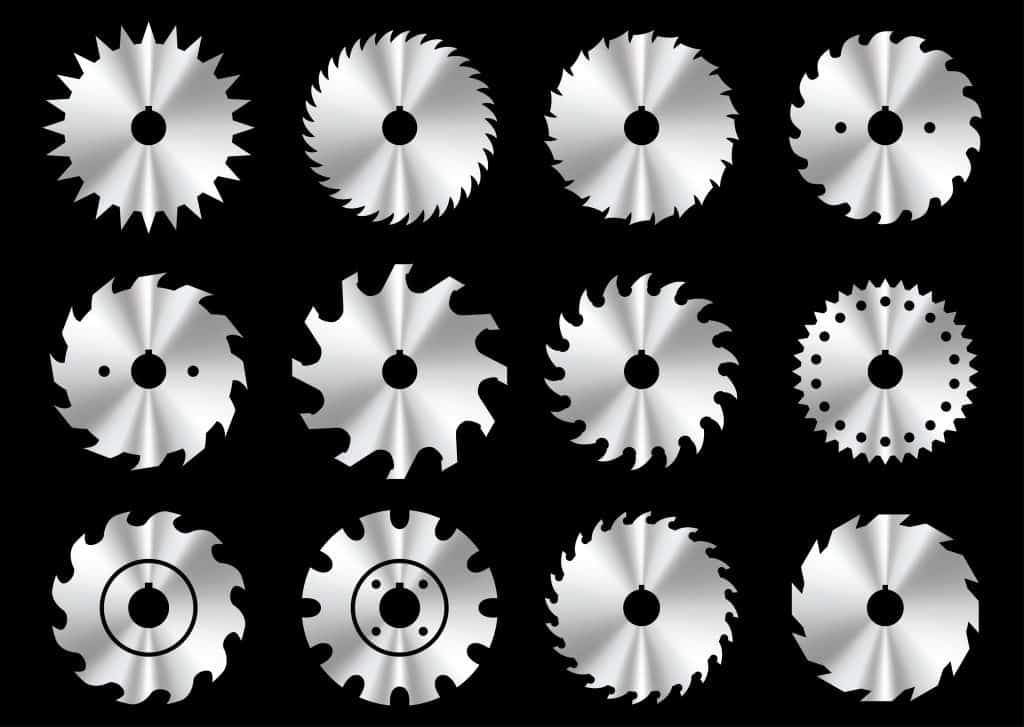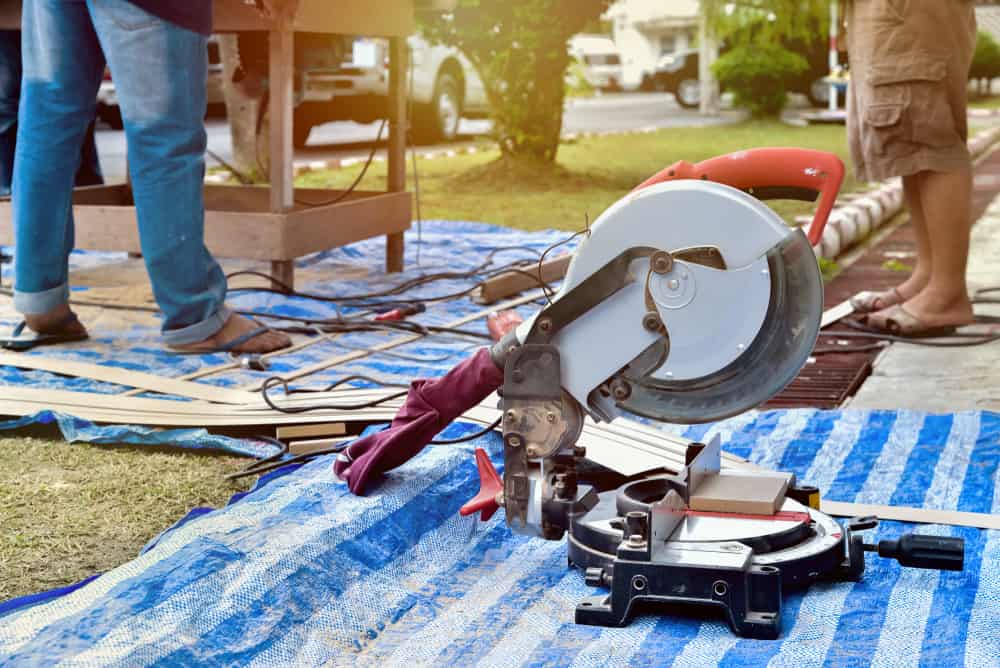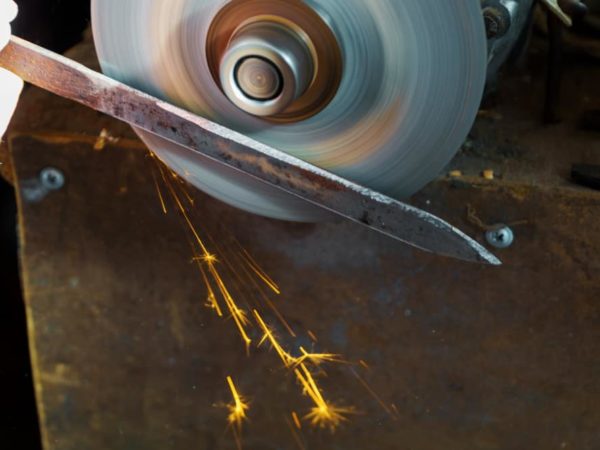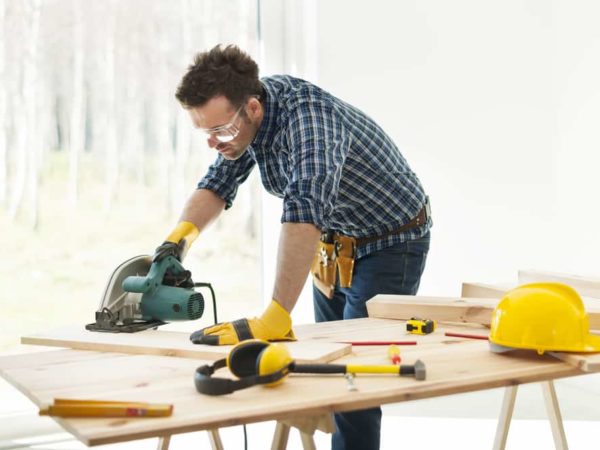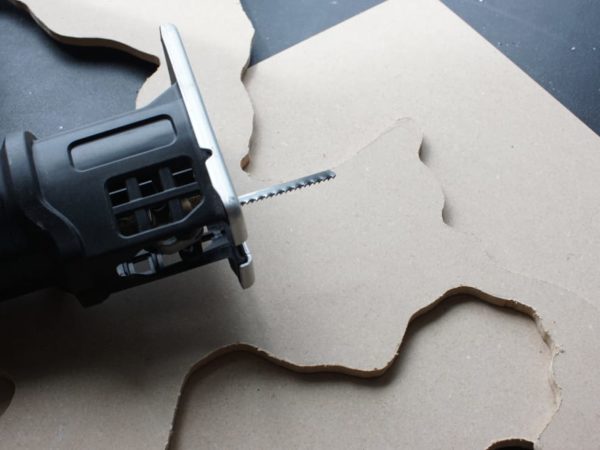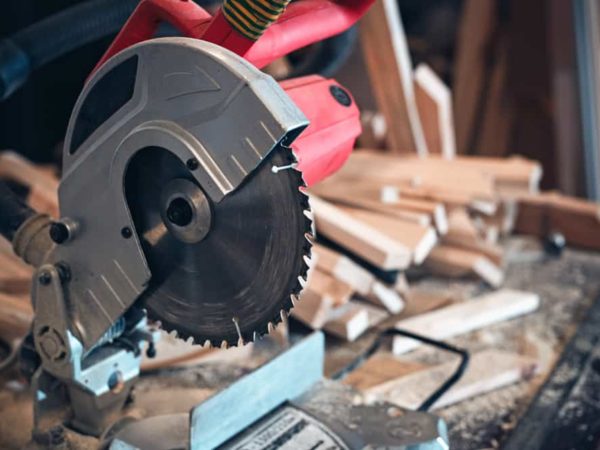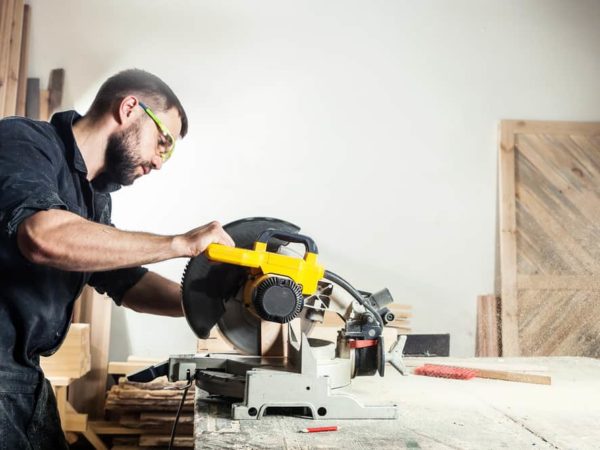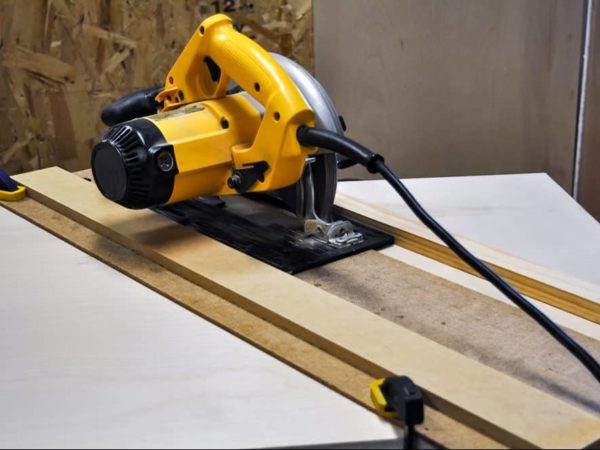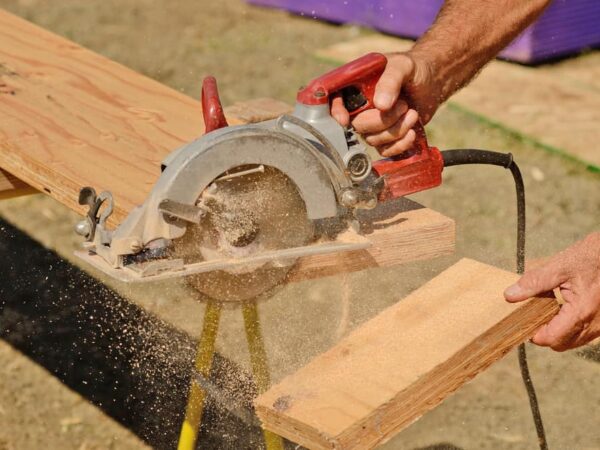Circular saws can be highly practical tools that allow you to cut wood and other materials quickly and efficiently. However, to use one effectively, there are several techniques you need to master.
To save you the trouble of picking up everything by yourself through trial and error, here we give you our top 11 tips for using a circular saw.
Safety tips
We will break our tips down into two sections – safety tips and tips for improving your skills. Since safety should always be your number one concern when using power tools, let’s look at safety tips first.
1. Always use the correct safety equipment
When using a circular saw, the absolute minimum in terms of protective equipment you should always use is a pair of tough work gloves and proper eye protection.
Circular saws can throw up chips of wood that can hit you in the eye, potentially damaging your eye or even blinding you permanently. If you lose your sight in an eye, you can’t get it back, so it’s not a risk you should think about taking.
Always wear proper safety eyewear – a pair of regular glasses won’t do the job. Safety glasses will protect your eyes, but to be completely safe, the best option is safety goggles.
Gloves won’t give you much protection if your hand comes into contact with the spinning blade, but they will protect your hands from splinters.
You should also consider wearing proper ear protection, especially when working for longer periods. Like your sight, once your hearing is damaged, you can’t get it back.
Finally, also consider wearing a mask to protect yourself from breathing in sawdust and other particles.
2. Keep your finger off the trigger when lining up work
This is the kind of good habit you should try to develop to help avoid any danger of injury. Whenever lining up work with one hand, always remove your finger completely from the trigger with the other. This will mean there is no risk of the blade starting up accidentally.
3. Always wait for the blade to come to a complete stop
After you’ve finished cutting, wait for the blade to come to a complete stop before you put the saw down or start lining up the next piece of work. Again, this is all about minimizing the risk of any accidents happening.
4. When you finish working, unplug the saw
When you no longer need the saw, make sure the blade guard is locked in the down position and then unplug the saw. This will prevent it from coming on accidentally and will also avoid any danger if children manage to get hold of it while you are not there.
Techniques and skills
Next, we look at some tips for improving your skills in using a circular saw.
5. Measure twice, cut once
This is an old woodworker’s adage and it holds just as true when working with a circular saw as with any other kind of woodworking.
Always measure twice before you start cutting. Once you start making the cut, there is no turning back if you make a mistake.
6. Set the correct height
The accepted guideline for setting the height is that the blade should be about 1/8” lower than the piece of wood you are cutting.
If the saw is set much lower than the wood you are cutting, it will make the blade labor more and will result in a less clean cut.
7. Cut to the side of your line
If you cut down the middle of the line you have drawn on a piece of wood, you will find that you have cut into the piece of wood you wanted to keep, leaving you with fractionally less wood than you originally planned.
In some cases, this may not be a big deal – but when you need to work very precisely, it can make a difference. If you cut along the line, you will always be left wondering why the wood is not the correct size.
Instead, cut along the side of the line you have drawn, leaving exactly the amount of wood you measured out.
8. Cut with the good side facing down
Since the blades of a circular saw cut in an upwards direction, the part of the wood facing down will be less at risk of being damaged when splinters of wood fly off as you cut.
For this reason, always cut with the good side of the wood – the part that will be seen at the end of the project – facing down.
9. Use tape to prevent splintering
Another way to prevent splintering is to apply masking tape or painter’s tape to the surface of the wood before you cut. This will hold the wood in place as you work, giving you a smooth cut with no damage to the wood.
10. Use an appropriate blade for the work
Not all blades are good for all jobs. There are many kinds of circular saw blades, and you should make sure you are using one that is properly adapted to your project. For example, blades for cutting softwood and blades for cutting metal are very different.
Also, make sure your saw is able to cut the material you need to cut. Not all saws can cut through concrete, for example, and if this is what you need to do, make sure your saw is up to the job.
11. Work in good light
When using a circular saw, make sure your work is well lit. If you want to cut accurately and precisely, you need to make sure you can see what you are doing. If you try to cut in poor lighting conditions, you risk making mistakes that you can’t correct later.
A highly versatile tool – if you know how to use it right
Whenever using any kind of power tool, always consider the safety aspects first. After this, as long as you understand the basic techniques, using a circular saw will allow you to achieve results that would not be possible with any other kind of tool.
Don’t forget to pin it!

